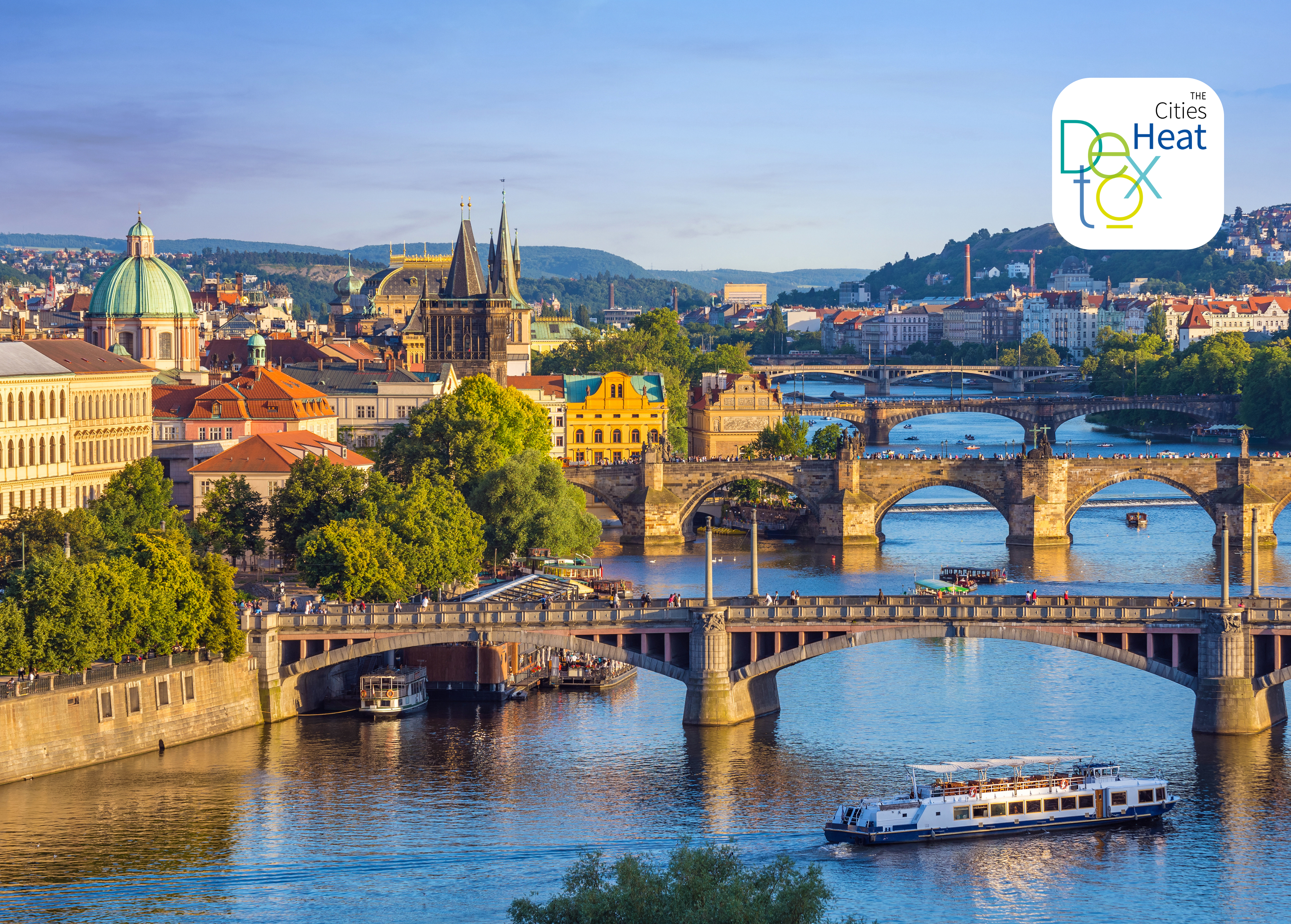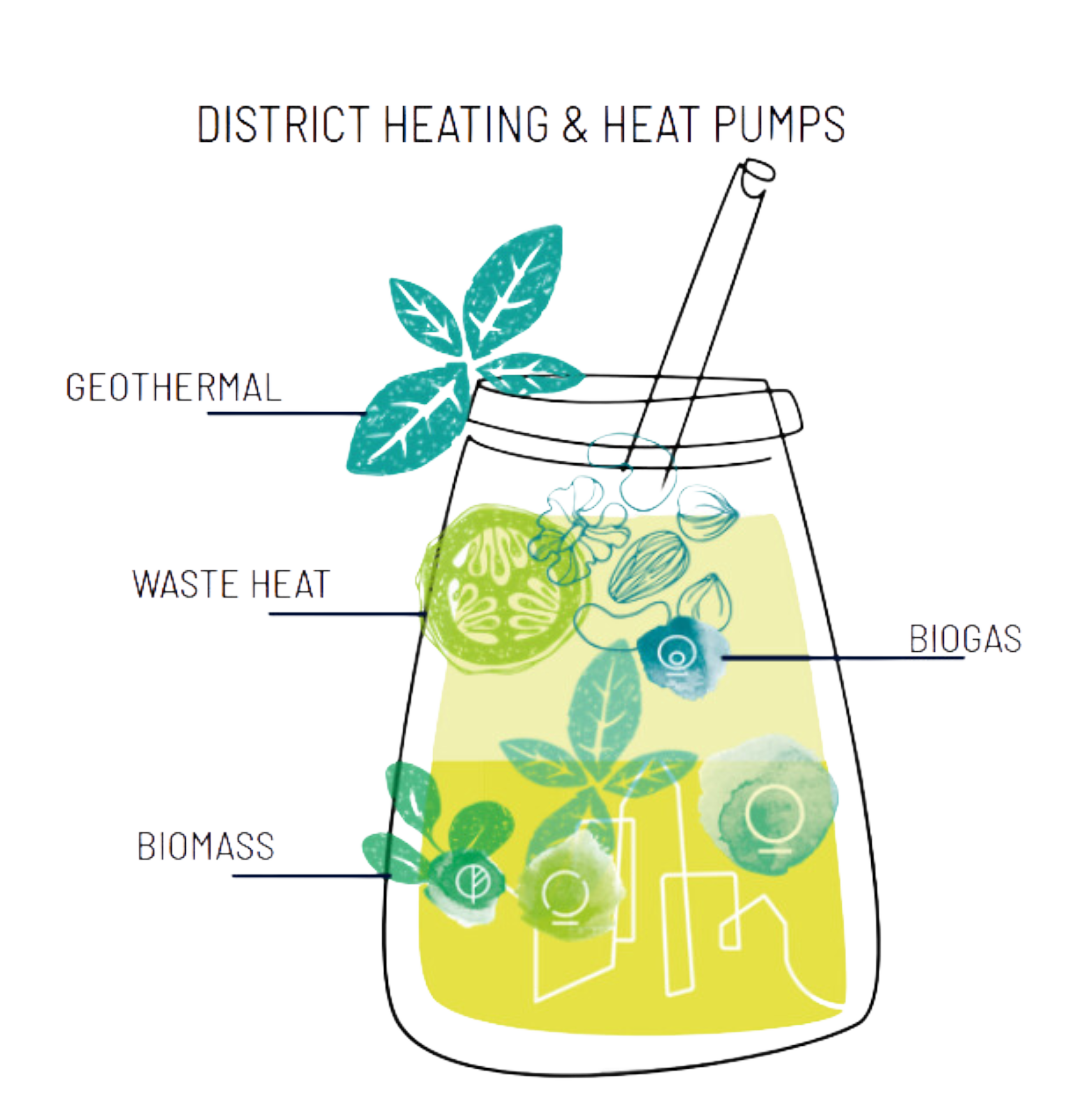Prague, Czechia

Located in Central Bohemia, by the margins of the Vlatva river, Prague is known for its rich history and cultural offer. When it comes to climate ambition, the city is working towards a healthy future, pledging to reduce 45% of its CO2 emissions by 2030, when compared to 2010 - a goal surpassing that of the European Commission (55% decreased compared to 1990 by 2030). However, due to its use of coal in the heating system, the Czech capital has big challenges ahead on its journey to detox heat.
Prague’s heating landscape: obstacles and opportunities
The current heat system in Prague is a hazard for its 1.5 million inhabitants, as the main source of heat is still coal, an important source of air pollution. The existence of a dense network of district heating (DH), which covers almost 700 kilometres, is a good starting point for the city, though the current grid is currently mainly sourced from the coal power plant 34 kilometres away from Prague -, with some gas and waste incineration in the mix.
Changing sources of heat is a challenge in itself, but Prague is further conditioned by the fact that the district heating company, Veolia, is not owned by the city, and doesn’t always share Prague’s vision for the future. To substitute coal, Veolia is planning to supply the DH network with natural gas, which, despite its name, is not a sustainable nor a healthy solution for delivering heat.
What’s more, even though modernisation funds could cover the costs of innovative technologies to decarbonise heat, they are currently being used only to transition from coal to gas. For Martin Bursik, Chair of the Climate Commission of the Prague City Council, this strategy is faulty: “gas is not the bridge from coal to renewable”, and therefore other solutions must be sought.
A “step-by-step" detox
Faced with these challenges, Prague’s determination remains firm. Martin Bursik believes that “step by step, project after project the reality will change”. After all, heat pumps are much more efficient and cheaper than gas, and Czechia is strong in their production due to its industrial tradition. As such, Prague has many projects planned to harness this technology and detoxify the city’s heat.
From wastewater to clean heat
One of the city’s major projects to deliver healthy heat is the new energy centre built on the Central Wastewater Treatment Plant, which treats 93% of Prague’s wastewater. Considering the city’s growing population, this centre’s potential is only bound to increase. The water leaving the treatment is 10 degrees higher in temperature, currently at a flow of 3 m3 per second. With large heat pumps, the heat production in this site could cover more than 30% of the heat coming from coal.
However, there are legislative issues blocking this project. Currently, national legislation requires the DH company to implement renewable heat, but has no mention of waste heat, meaning that Veolia is not legally obliged to incorporate this form of sustainable heat.
Likewise, plans to produce biomethane from sludge gas, and bioCNG (the non-fossil variant of compressed natural gas) from biomethane, are being challenged. As biomethane has a lower content of energy, it is considered to be the same as fossil fuels according to Czech legislation, even if it is much cleaner.
Public transport and a healthy heat system
Another innovative project in development combines two different areas of sustainability: transport and heat supply. This project plans to use geothermal energy from underground, as the new metro line is being constructed – a strategy inspired by cities like Vienna and London, which also take geothermal heat from their underground systems. The new metro stations are being built with this project in mind, with absorption pipes to capture heat and connect to the DH system.
Prague wants to identify all of its geothermal potential, namely in the river. The National Theatre, a renowned attraction and landmark of the city, is already equipped with heat pumps, using the potential of the river for heating and cooling.
A promising future
With all this potential, including other upcoming projects like the usage of waste heat from data centres, there is no doubt that Prague has the conditions for a successful heat detox. What is fundamental to make it work is the cooperation with Veolia, the DH company. Open dialogues are being prepared, and soon there will be a voluntary agreement between the city and Veolia, so they can meet climate targets.
The EU legislative framework, particularly the transposition of the Renewable Energy Directive, is expected to further enable Prague to realise its potential by supporting the integration of clean heat from the new energy centre into the grid.
Main challenges to detoxify heat:
- The DH does not belong to the city and has different visions for the replacement of coal in the system.
- The legislative framework is against the projects of including waste heat in the DH system.
Next steps:
- Have open dialogues with Veolia and sign voluntary agreement
- Develop projects to explore the potential of geothermal and waste heat, including from wastewater treatment and data centres.

Prague's Heat Detox

Key Heat Figures:
- Kilometers of District Heating & Cooling currently: 670 km
Covenant Figures:
- Signatory to the Covenant of Mayors since: 2015
- Emission reduction ambitions:
- % GHG emissions reductions by 2030: Reduce 45% in comparison to 2010
Contact
Martin Bursik - Chair of the Climate Commission of the Prague City Council
- Martin.bursik@praha.eu


